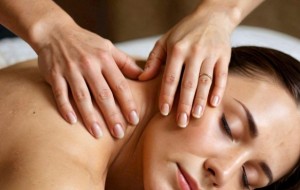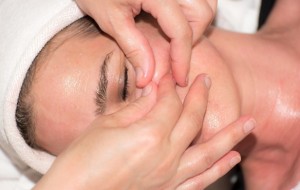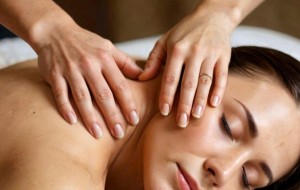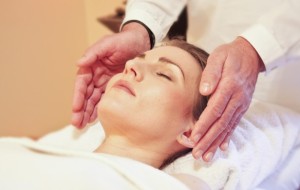Skin Treatments for looking younger
This article explores the top 10 skin treatments recommended by experts to achieve a youthful appearance. It delves into innovative solutions such as laser therapy, chemical peels, and microneedling, alongside traditional methods like retinoids and antioxidants
The Quest for Youthful Skin
The Timeless Desire for Youth
The pursuit of youthful skin is a timeless endeavor that transcends cultures and generations. Throughout history, people have sought ways to maintain a vibrant and youthful appearance, often turning to nature, science, and innovation to achieve this goal. The desire to look younger is not merely about vanity; it is deeply rooted in the human psyche, reflecting a longing for vitality, health, and confidence.
The Science Behind Aging Skin
Understanding the science behind aging skin is crucial in the quest for youthfulness. As we age, our skin undergoes several changes, including a decrease in collagen production, loss of elasticity, and the appearance of fine lines and wrinkles. Environmental factors such as sun exposure, pollution, and lifestyle choices like diet and stress also play significant roles in accelerating the aging process. By comprehending these factors, individuals can make informed decisions about the treatments and products that best suit their needs.
The Role of Modern Technology
Modern technology has revolutionized the field of skincare, offering innovative solutions that were once unimaginable. From laser treatments to advanced serums, the options available today are vast and varied. These technological advancements have made it possible to target specific skin concerns with precision and efficacy, providing individuals with tailored solutions that cater to their unique needs.
The Importance of Expert Guidance
Navigating the myriad of skincare treatments can be overwhelming, which is why expert guidance is invaluable. Dermatologists and skincare professionals possess the knowledge and expertise to recommend treatments that are both safe and effective. Their insights can help individuals avoid common pitfalls and ensure that they achieve the best possible results in their quest for youthful skin.
Embracing a Holistic Approach
Achieving youthful skin is not solely about external treatments; it requires a holistic approach that encompasses lifestyle changes, a balanced diet, and proper skincare routines. By adopting a comprehensive strategy that addresses both internal and external factors, individuals can enhance their skin's health and appearance, ultimately achieving a more youthful and radiant complexion.
Understanding Skin Aging: Causes and Effects
Causes of Skin Aging
Intrinsic Aging
Intrinsic aging, also known as chronological aging, is a natural process that occurs over time. It is largely determined by genetic factors and is an inevitable part of the aging process. As we age, the production of collagen and elastin, proteins that provide structure and elasticity to the skin, decreases. This leads to the formation of fine lines and wrinkles. The skin's ability to retain moisture also diminishes, resulting in dryness and a loss of plumpness. Furthermore, the turnover rate of skin cells slows down, causing the skin to appear dull and less radiant.
Extrinsic Aging
Extrinsic aging is influenced by external environmental factors and lifestyle choices. The most significant contributor to extrinsic aging is sun exposure, which leads to photoaging. Ultraviolet (UV) rays from the sun penetrate the skin and cause damage to collagen fibers, leading to premature wrinkles and age spots. Other factors include pollution, which can generate free radicals that damage skin cells, and smoking, which reduces blood flow to the skin and depletes essential nutrients. Poor diet and lack of sleep can also accelerate the aging process by affecting the skin's ability to repair and regenerate.
Effects of Skin Aging
Wrinkles and Fine Lines
As the skin loses its elasticity and collagen production decreases, wrinkles and fine lines begin to form. These are most commonly seen around areas of frequent muscle movement, such as the eyes, mouth, and forehead. Over time, these lines become more pronounced and permanent.
Loss of Firmness and Elasticity
The reduction in collagen and elastin leads to a loss of skin firmness and elasticity. This can result in sagging skin, particularly around the jawline, neck, and cheeks. The skin may also appear thinner and more fragile.
Dryness and Rough Texture
Aging skin often experiences a decrease in natural oil production, leading to dryness and a rough texture. The skin's barrier function weakens, making it more susceptible to environmental damage and irritation. This can exacerbate the appearance of fine lines and contribute to an uneven skin tone.
Uneven Skin Tone and Age Spots
Exposure to UV rays and other environmental factors can lead to hyperpigmentation, resulting in an uneven skin tone and the development of age spots, also known as liver spots. These are flat, brown, or black spots that typically appear on areas of the skin that have been exposed to the sun, such as the face, hands, and arms.
Dullness and Lack of Radiance
The slowdown in skin cell turnover results in a buildup of dead skin cells on the surface, causing the skin to appear dull and lackluster. This can make the complexion look tired and aged, further emphasizing the signs of aging.
Criteria for Selecting Skin Treatments
Understanding Skin Type
Identifying Your Skin Type
Understanding your skin type is crucial in selecting the right treatment. Skin types generally fall into categories such as oily, dry, combination, sensitive, or normal. Each type has specific needs and reacts differently to various treatments.
Tailoring Treatments to Skin Type
Once you identify your skin type, choose treatments that cater specifically to its needs. For instance, oily skin may benefit from treatments that control sebum production, while dry skin may require intensive hydration.
Evaluating Treatment Efficacy
Scientific Backing
Select treatments that have been scientifically proven to be effective. Look for clinical studies or dermatological endorsements that support the treatment's claims.
Long-term Results
Consider whether the treatment offers long-term benefits or if it only provides temporary improvements. Treatments with lasting effects are generally more desirable.
Safety and Side Effects
Understanding Potential Risks
Research any potential side effects associated with the treatment. Some treatments may cause irritation, redness, or other adverse reactions, especially for sensitive skin types.
Consulting with Professionals
Before undergoing any treatment, consult with a dermatologist or skincare professional to ensure it is safe for your skin type and condition.
Cost and Accessibility
Budget Considerations
Evaluate the cost of the treatment and whether it fits within your budget. Some treatments may require multiple sessions, which can increase the overall expense.
Availability of Treatments
Consider the accessibility of the treatment. Some advanced treatments may only be available in certain locations or require specialized equipment.
Personal Goals and Expectations
Defining Desired Outcomes
Clearly define what you hope to achieve with the treatment. Whether it's reducing wrinkles, improving skin texture, or enhancing radiance, having clear goals will help in selecting the most appropriate treatment.
Managing Expectations
Understand the realistic outcomes of the treatment. Some treatments may promise dramatic results, but it's important to have realistic expectations based on expert advice and scientific evidence.
Expert Insights: Dermatologists and Skincare Specialists
Understanding the Role of Dermatologists and Skincare Specialists
Dermatologists and skincare specialists play a crucial role in guiding individuals towards effective skin treatments. Their expertise is grounded in a deep understanding of skin biology, conditions, and the latest advancements in skincare technology. These professionals are trained to assess skin types, diagnose conditions, and recommend personalized treatment plans that cater to individual needs.
Key Factors Considered by Experts
Skin Type and Condition
Experts emphasize the importance of tailoring treatments to specific skin types and conditions. Whether dealing with oily, dry, sensitive, or combination skin, dermatologists assess the unique characteristics of each patient's skin. They also consider any underlying conditions such as acne, rosacea, or hyperpigmentation, which can influence the choice of treatment.
Age and Lifestyle
Age and lifestyle are significant factors that dermatologists take into account. As skin ages, it undergoes changes that require different approaches to maintain its youthful appearance. Lifestyle factors, including diet, stress levels, and exposure to environmental pollutants, also impact skin health and are considered when recommending treatments.
Popular Treatments Recommended by Experts
Retinoids and Retinols
Dermatologists often recommend retinoids and retinols for their proven anti-aging benefits. These vitamin A derivatives promote cell turnover, reduce fine lines, and improve skin texture. Experts advise starting with lower concentrations to minimize irritation and gradually increasing usage as the skin adapts.
Chemical Peels
Chemical peels are another popular treatment endorsed by skincare specialists. They involve applying a chemical solution to exfoliate the skin, revealing a smoother and more youthful layer. Dermatologists customize the strength and type of peel based on the patient's skin type and desired outcomes.
Laser Treatments
Laser treatments are frequently recommended for their ability to address a variety of skin concerns, from wrinkles to pigmentation issues. Dermatologists utilize different types of lasers, such as fractional lasers or intense pulsed light (IPL), to target specific problems. These treatments require professional expertise to ensure safety and effectiveness.
The Importance of Professional Guidance
Personalized Treatment Plans
Dermatologists and skincare specialists emphasize the importance of personalized treatment plans. They conduct thorough assessments to understand each patient's unique needs and goals. This personalized approach ensures that treatments are not only effective but also safe, minimizing the risk of adverse reactions.
Monitoring and Adjustments
Ongoing monitoring and adjustments are key components of expert-recommended skincare solutions. Dermatologists track the progress of treatments and make necessary adjustments to optimize results. This continuous evaluation helps in addressing any emerging concerns and adapting the treatment plan as needed.
Expert Advice on Skincare Maintenance
Consistency and Patience
Experts stress the importance of consistency and patience in achieving youthful-looking skin. They advise patients to adhere to their recommended skincare routines and allow time for treatments to show results. Quick fixes are rare, and long-term commitment is essential for sustainable improvements.
Sun Protection
Sun protection is a non-negotiable aspect of any expert-recommended skincare regimen. Dermatologists advocate for daily use of broad-spectrum sunscreen to protect the skin from harmful UV rays, which can accelerate aging and cause damage. They also recommend wearing protective clothing and seeking shade during peak sun hours.
Top 10 Skin Treatments for Youthful Appearance
Treatment 1: Botox Injections
Description and Benefits
Botox injections are a popular non-surgical treatment that involves injecting small amounts of botulinum toxin into specific muscles. This temporarily relaxes the muscles, reducing the appearance of fine lines and wrinkles, particularly around the eyes and forehead. The benefits include a smoother, more youthful appearance with results that can last up to four months.
Treatment 2: Dermal Fillers
Description and Benefits
Dermal fillers are injectable treatments that add volume to the skin, smoothing out wrinkles and fine lines. They are often used to plump up lips, cheeks, and other areas that may have lost volume due to aging. The benefits include immediate results, minimal downtime, and a more youthful, rejuvenated appearance.
Treatment 3: Chemical Peels
Description and Benefits
Chemical peels involve applying a chemical solution to the skin, which exfoliates and eventually peels off, revealing new, smoother skin underneath. This treatment can improve skin texture, reduce fine lines, and even out skin tone. It is effective for treating sun damage, age spots, and acne scars.
Treatment 4: Microdermabrasion
Description and Benefits
Microdermabrasion is a minimally invasive procedure that uses a special applicator with an abrasive surface to gently sand away the thick outer layer of the skin. This treatment helps to rejuvenate the skin, reduce the appearance of fine lines, and improve overall skin tone and texture.
Treatment 5: Laser Skin Resurfacing
Description and Benefits
Laser skin resurfacing uses concentrated beams of light to remove damaged skin layer by layer. This treatment can effectively reduce wrinkles, scars, and blemishes, and promote the growth of new, healthy skin. The benefits include a more even skin tone and a significant reduction in the signs of aging.
Treatment 6: Microneedling
Description and Benefits
Microneedling involves using fine needles to create tiny punctures in the skin, which stimulates the body's natural healing process and boosts collagen production. This treatment can improve skin texture, reduce the appearance of scars and wrinkles, and enhance overall skin tone.
Treatment 7: Radiofrequency Skin Tightening
Description and Benefits
Radiofrequency skin tightening uses energy waves to heat the deep layers of the skin, stimulating collagen production and tightening the skin. This non-invasive treatment can reduce the appearance of sagging skin and wrinkles, providing a firmer, more youthful look.
Treatment 8: LED Light Therapy
Description and Benefits
LED light therapy uses different wavelengths of light to penetrate the skin at varying depths. This treatment can reduce inflammation, promote collagen production, and improve skin tone and texture. It is a gentle, non-invasive option for achieving a more youthful appearance.
Treatment 9: Platelet-Rich Plasma (PRP) Therapy
Description and Benefits
PRP therapy involves using a concentration of a patient's own platelets to accelerate the healing of injured tendons, ligaments, muscles, and joints. In skincare, it is used to rejuvenate the skin, reduce wrinkles, and improve overall skin texture. The benefits include natural-looking results and minimal risk of allergic reactions.
Treatment 10: Retinoid Creams
Description and Benefits
Retinoid creams are topical treatments derived from vitamin A that promote cell turnover and collagen production. They are effective in reducing fine lines, improving skin texture, and treating acne. Regular use can lead to a smoother, more youthful complexion.
Comparing Costs and Accessibility of Treatments
Overview of Treatment Costs
Understanding the financial aspect of skin treatments is crucial for making informed decisions. The cost of skin treatments can vary significantly based on several factors, including the type of treatment, the expertise of the practitioner, and the geographical location.
Non-Invasive Treatments
Non-invasive treatments, such as chemical peels, microdermabrasion, and laser therapy, generally have a lower cost compared to surgical options. Chemical peels can range from $150 to $300 per session, while microdermabrasion might cost between $75 and $Laser treatments, depending on the type and area treated, can range from $200 to $3,000 per session.
Minimally Invasive Treatments
Minimally invasive procedures like Botox and dermal fillers are popular for their quick results and relatively lower costs. Botox injections typically cost between $300 and $600 per session, while dermal fillers can range from $600 to $2,000, depending on the type and amount of filler used. We love SP Beauty give them a call.
Surgical Treatments
Surgical options, such as facelifts and eyelid surgery, are more expensive due to their complexity and the need for anesthesia and operating facilities. A facelift can cost anywhere from $7,000 to $15,000, while eyelid surgery might range from $3,000 to $7,000.
Factors Influencing Costs
Several factors influence the cost of skin treatments:
- Practitioner Expertise: Treatments performed by highly experienced or renowned practitioners may come at a premium.
- Location: Costs can vary significantly based on geographical location, with urban centers typically having higher prices.
- Facility Type: Treatments performed in high-end clinics or medical spas may be more expensive than those in standard dermatology offices.
Accessibility of Treatments
Accessibility to skin treatments is influenced by several factors, including geographical location, availability of qualified practitioners, and financial considerations.
Urban vs. Rural Access
Urban areas generally offer greater access to a variety of skin treatments due to the higher concentration of clinics and specialists. In contrast, rural areas may have limited options, requiring individuals to travel to larger cities for certain procedures.
Insurance and Financing Options
Most cosmetic skin treatments are not covered by insurance, as they are considered elective procedures. However, some clinics offer financing options or payment plans to make treatments more accessible. It's important for individuals to explore these options and discuss them with their chosen provider.
Availability of Qualified Practitioners
The availability of qualified practitioners can vary, impacting accessibility. It's essential to seek treatments from certified and experienced professionals to ensure safety and efficacy. Checking credentials and reviews can help in selecting the right practitioner.
Considerations for Choosing a Treatment
When comparing costs and accessibility, individuals should consider their specific skin concerns, desired outcomes, and budget. Consulting with a dermatologist or skincare specialist can provide personalized recommendations and help navigate the options available.
Potential Risks and Considerations
Allergic Reactions
Skin treatments, especially those involving chemical peels, injectables, or topical applications, can sometimes cause allergic reactions. These reactions may manifest as redness, itching, swelling, or even more severe symptoms like difficulty breathing. It is crucial to conduct a patch test before undergoing any treatment to identify potential allergens. Find out more at SP Beauty.
Infection
Procedures that involve breaking the skin, such as microneedling, laser treatments, or injections, carry a risk of infection. Proper sterilization of equipment and adherence to post-treatment care instructions are essential to minimize this risk. Patients should be vigilant for signs of infection, such as increased redness, pus, or fever, and seek medical attention if these occur.
Scarring
Some skin treatments, particularly those that are more invasive, can lead to scarring. This risk is higher in individuals prone to keloids or those with darker skin tones. It is important to discuss the risk of scarring with a qualified professional and consider less invasive options if scarring is a concern.
Hyperpigmentation or Hypopigmentation
Certain treatments, like chemical peels and laser therapies, can cause changes in skin pigmentation. Hyperpigmentation refers to darkening of the skin, while hypopigmentation refers to lightening. These changes can be temporary or permanent and are more common in individuals with darker skin tones. A thorough consultation with a dermatologist can help assess the risk and determine the most suitable treatment.
Pain and Discomfort
Many skin treatments can cause varying levels of pain and discomfort, both during and after the procedure. While some treatments may only cause mild tingling or warmth, others might result in significant pain requiring local anesthesia. Understanding the pain level associated with each treatment can help in making an informed decision. Visit our website at SP Beauty.
Downtime and Recovery
The recovery time required after a skin treatment can vary significantly. Some procedures may require minimal downtime, while others might necessitate days or even weeks of recovery. This can impact daily activities and work schedules, so it is important to plan accordingly and follow all post-treatment care instructions to ensure optimal healing.
Cost Considerations
Skin treatments can be expensive, and costs can vary widely depending on the type of procedure, the expertise of the practitioner, and the geographic location. It is important to consider the financial implications and explore whether multiple sessions are required to achieve desired results. Consulting with a professional can provide a clearer understanding of the total investment needed.
Long-term Effects
While many skin treatments offer immediate results, the long-term effects can vary. Some treatments may require ongoing maintenance to sustain results, while others might have lasting impacts on skin health. It is important to weigh the benefits against potential long-term consequences and discuss these with a qualified expert.
Choosing a Qualified Practitioner
The success and safety of skin treatments largely depend on the expertise of the practitioner. It is crucial to choose a qualified and experienced professional who is licensed and has a good track record. Researching credentials, reading reviews, and seeking recommendations can help in selecting the right practitioner to minimize risks.
Conclusion: Achieving and Maintaining Youthful Skin
Understanding the Importance of Consistency
Consistency is key when it comes to maintaining youthful skin. Regularly following a skincare routine tailored to your skin type and concerns can significantly enhance the effectiveness of treatments. This includes daily cleansing, moisturizing, and applying sunscreen, as well as incorporating targeted treatments like serums and masks. Consistency ensures that your skin receives the necessary nutrients and protection to combat aging signs effectively. Visit SP Beauty
Embracing a Holistic Approach
Achieving youthful skin is not solely about topical treatments; it requires a holistic approach that includes a healthy lifestyle. A balanced diet rich in antioxidants, vitamins, and minerals supports skin health from the inside out. Staying hydrated, getting adequate sleep, and managing stress levels are equally important. These lifestyle factors contribute to the skin's ability to repair and regenerate, enhancing the results of any skincare regimen.
The Role of Professional Guidance
Consulting with a dermatologist or skincare professional can provide personalized insights and recommendations tailored to your skin's unique needs. Professionals can help identify the most effective treatments and products, ensuring that you are using the right solutions for your skin type and concerns. Regular check-ups can also help monitor progress and make necessary adjustments to your skincare routine.
Staying Informed About Advancements
The skincare industry is continually evolving, with new treatments and technologies emerging regularly. Staying informed about the latest advancements can help you make educated decisions about incorporating new solutions into your routine. This includes understanding the benefits and potential risks of new treatments, as well as how they fit into your existing regimen. SP Beautician is our blog.
Commitment to Long-Term Care
Maintaining youthful skin is a long-term commitment that requires dedication and patience. While some treatments may offer immediate results, others may take time to show visible improvements. It's important to set realistic expectations and remain committed to your skincare routine. Over time, consistent care and attention will yield the desired youthful appearance and help maintain it for years to come.











Comments
0 comment